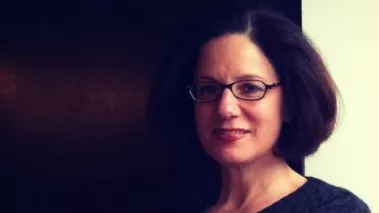Table of Contents
Judith Shulevitz: College Students Are ‘Hiding From Scary Ideas’

One Brown University student explained her recent decision to leave a debate about sexual assault thusly: “I was feeling bombarded by a lot of viewpoints that really go against my dearly and closely held beliefs.” In seeking to avoid ideas with which she disagrees, this student is far from alone—and this depressingly widespread sentiment is endangering open discourse on college campuses. Journalist Judith Shulevitz wrote in The New York Times on Sunday about the increasing demands from college students who want “safe spaces” where they will be shielded not just from physical danger, but from ideas that they find upsetting.
FIRE has long argued that universities cannot fulfill their vital function as places where students learn how to think, research, and debate if community members strive to avoid speech that makes them uncomfortable. This is particularly true when students call for the censorship of others in order to ensure their own emotional “safety.”
In her article, Shulevitz eloquently explains why the movement towards emotional safety at the expense of open discussion is bad for students individually and for the world at large:
People ought to go to college to sharpen their wits and broaden their field of vision. Shield them from unfamiliar ideas, and they’ll never learn the discipline of seeing the world as other people see it. They’ll be unprepared for the social and intellectual headwinds that will hit them as soon as they step off the campuses whose climates they have so carefully controlled. What will they do when they hear opinions they’ve learned to shrink from? If they want to change the world, how will they learn to persuade people to join them?
Indeed, though so many would-be censors are self-proclaimed activists, there is a limit on how much they can possibly accomplish while holed away where they hear only from people who already agree with them. Students who wish to effect change in the world should seek out those with whom they disagree. Yet, too many students continue to try to exclude provocative or controversial expression from campus (or at least from earshot).
The counterproductivity of this strategy is even more evident when looking at two types of confusion that motivate calls for censorship. First, as FIRE Board of Advisors member Wendy Kaminer remarked after being pilloried for using the word “nigger” in a discussion about the word at Smith College: “It’s amazing to me that [students] can’t distinguish between racist speech and speech about racist speech, between racism and discussions of racism.” FIRE has seen this phenomenon elsewhere. At the University of Iowa, for example, an art display by a professor who intended to raise awareness about racism was removed from an outdoor area of campus following complaints by students who misinterpreted the purpose of the work. Activists effectively alienate allies through their knee-jerk reactions to certain words regardless of their context.
Second, students advocating for censorship fail to distinguish between physical violence—or speech that is intended to and likely to result in imminent violence—and speech that may be emotionally hurtful. Smith students criticizing Kaminer’s refusal to self-censor, for example, accused her of committing “an explicit act of racial violence.” This characterization is an insult to those who are the victims of actual violence and hinders efforts to address serious issues of physical safety.
For a more astounding example: Shulevitz tells readers about University of Chicago students’ interactions with, and responses to, Zineb El Rhazoui, a Charlie Hebdo journalist who has faced death threats and travels with security guards. With the devastating attack on the magazine still fresh in everyone’s minds, one student said she, too, “felt threatened”—suggesting that her discomfort with how Charlie Hebdo writes about Muslims is comparable to El Rhazoui’s actual, reasonable fear for her life. Another student wrote in the student newspaper that El Rhazoui had made students feel that they were not “safe enough to express dissenting opinions.”
If meaningful debate is to be possible on college campuses, students must be willing to thoughtfully engage with those with whom they disagree, those who use language they dislike, and those who make them emotionally uncomfortable.
For more on just how far college campuses have to go, check out the rest of Shulevitz’s article in The New York Times.
Recent Articles
Get the latest free speech news and analysis from FIRE.

Can the government ban controversial public holiday displays?

The trouble with banning Fizz

FIRE's 2025 impact in court, on campus, and in our culture
